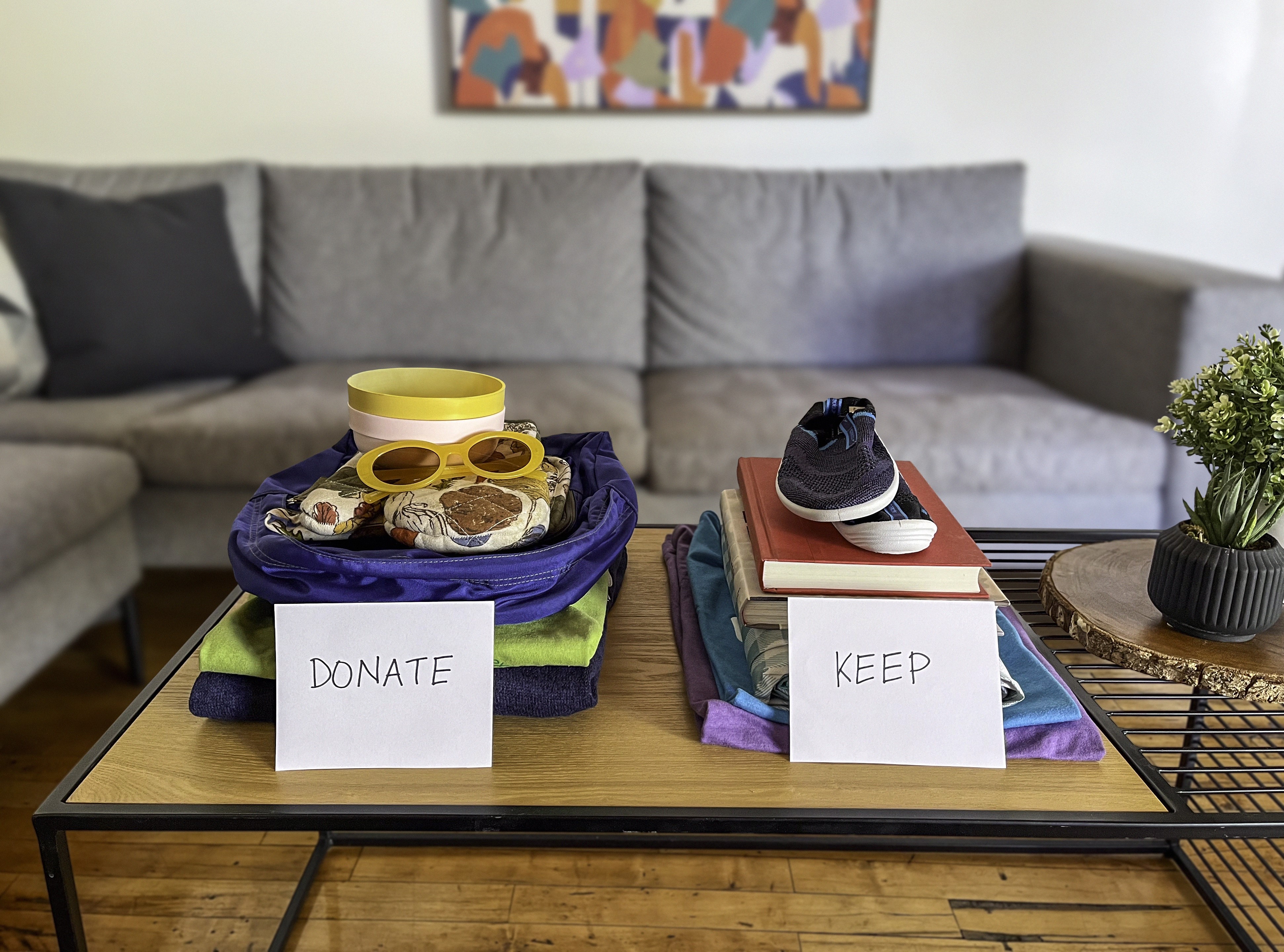Moving soon? Try these tips to reduce waste

Whether you’re moving out of a dorm, apartment or house, moving can be stressful. It can also create a lot of waste. Boxes, packing supplies and items you no longer want add up. By taking a few small steps, you can make your move more sustainable and less of a hassle.
Step 1: Take inventory
Before packing up your items, separate the things you know you aren’t taking to your new home. Be it decorations you no longer like, furniture that won’t work in your new space or miscellaneous items you find while clearing out closets, try to avoid getting surprised last-minute by items that often end up in the trash. Create a list or physical pile of items you aren’t planning to take with you and come up with a plan for finding them new homes.
-
For items that have life left: Check with local thrift stores, reuse retailers and/or online marketplaces to give away your gently-used items. Also ask friends, family and neighbors if they want anything.
-
For broken, damaged or hazardous items: If items can’t be reused or repurposed, try to dispose of them with trash as the last option. Scrap metal can be recycled at a scrap metal facility and household hazardous waste like paint, automotive fluids and more can be brought to the Environmental Center for free.
Tip: Use our A to Z Green Guide to find disposal options for unwanted items.
Step 2: Make a plan for your move
Once you’ve simplified your packing list, start planning how you will pack the rest of your belongings. Start setting aside old shipping boxes, storage totes and tote bags. Ask your community for extra boxes and totes. If you need more boxes, consider renting durable totes from companies like U-Haul. Use soft textiles and pillows you already have to pack in fragile items.
As you pack up boxes, label what’s in them and where they should go in your new place. For example, try to keep all cooking tools and kitchenware together. This will help when you start unpacking and looking for items.
Next, decide how you will transport your items. If you’re not paying a moving company, it might be worth renting or borrowing a large truck or trailer to avoid needing to make multiple trips.
Step 3: Keep reuse on the mind
As you move, try to prioritize reuse when you can. Offer empty boxes to others who may be moving or on online marketplaces. Then, break down any remaining cardboard boxes to recycle. Break an item while moving? Try to repair it yourself or take it to a Ramsey County Fix-It Clinic for free.
Tip: Need tools for a last-minute fix? Can’t find your baking pan? Check if your local library has a “Library of Things.” These programs let you borrow tools, cookware and more for free!
Step 4: Set up your new home for success
Congratulations on successfully moving! As you settle into your new home, check what collection services are available to you. Set up recycling with your city, consider setting up or continuing food scraps collection for compost and see if there are easy swaps to make your new home more environmentally friendly!
Tip: New to Ramsey County? Look through our Recycling Guide to learn about what services are available to you!